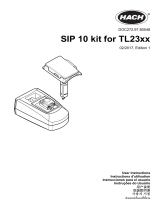
Roche Diagnostics
Addendum · Version 4.2.2 3
cobas 8000
able of contents
Document information .........................................................................................................4
Chapter: cobas c 702 module................................................................................................5
Top view > Reagent manager..........................................................................................5
Unloading tray............................................................................................................5
Chapter: cobas e 602 module................................................................................................6
Top view > Measuring area.............................................................................................6
Immunoassay analysis workflow .............................................................................6
Chapter: Specifications..........................................................................................................7
Environmental conditions ..............................................................................................7
Chapter: Calibration ..............................................................................................................8
Calibration (overall system) > Install submenu ...........................................................8
Editing concentration values....................................................................................8
Chapter: Utility.......................................................................................................................9
System submenu > Rack assignment.............................................................................9
Module Settings..........................................................................................................9
System submenu > Rack reception ..............................................................................10
Rack Reception.........................................................................................................10
Application submenu > Range parameters.................................................................11
Qualitative evaluation of quantitative assays (e 602 tests)..................................11
Chapter: General maintenance...........................................................................................12
List of maintenance items .............................................................................................12
List of maintenance checks ...........................................................................................12
Chapter: Maintenance of photometric modules ..............................................................13
Weekly maintenance......................................................................................................13
Washing the reaction parts .....................................................................................13
Chapter: Data alarms ...........................................................................................................14
Data alarms of photometric tests .................................................................................14
>React........................................................................................................................14
Online Help only ..................................................................................................................15
Workplace menu > Reaction Monitor window..........................................................15
Reaction information ..............................................................................................15
Calibration menu > Install submenu...........................................................................15
Edit window..............................................................................................................15
Utility menu > Application submenu..........................................................................17
Range .........................................................................................................................17
COBI CD only ......................................................................................................................18
Chapter: e 602 - Immunology calibration...................................................................18
Result calculation for qualitative assays................................................................18
Chapter: c 502 and c 701 - Calculating data alarms ..................................................20
Reaction limit check (>React)................................................................................20
























